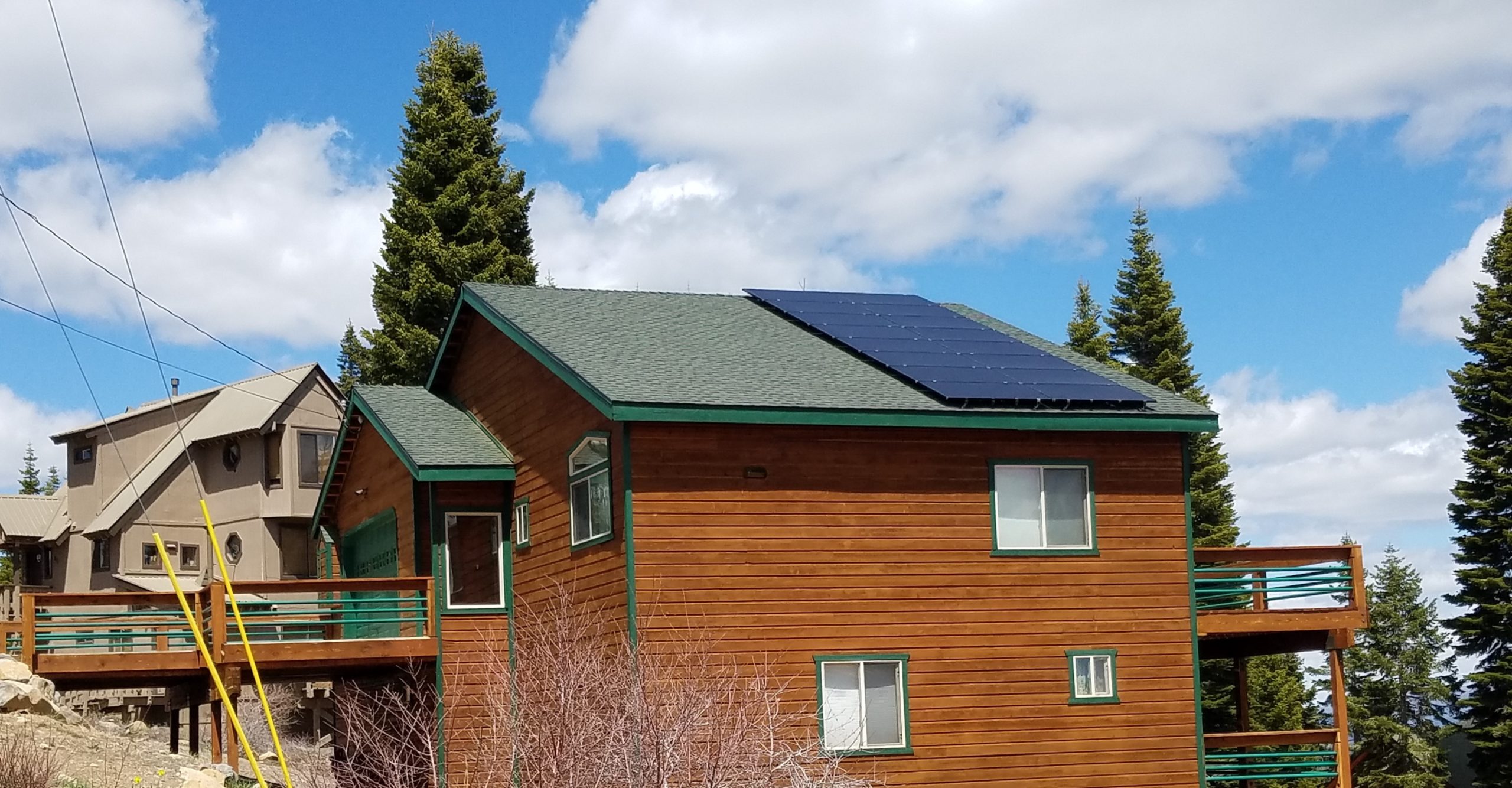Are you planning to build a new house in Truckee? Or perhaps a detached accessory dwelling unit (ADU)? If so, the California Energy Code requires you to install a solar photovoltaic (PV) system. These requirements apply to all new low-rise residential buildings, including single family, accessory buildings, and multifamily with three stories or less.
But wait – Truckee is a high snow load area! Won’t the system fail?
We have seen system failures, but they’re primarily the result of inadequate installation or component capacity. It is important to do your homework, hire knowledgeable professionals, and design and install the system correctly.
Some points to keep in mind for a successful installation are:
- Keep the PV system requirement in mind right from the start of your project. Locate the building in a non-shaded area of the lot, orient it for optimum sun exposure, and plan for roof slopes that facilitate the placement and design of the solar system.
- Install the panels up near the ridge (allowed in Truckee provided the opposite side of the roof is accessible) and down to the eaves. This prevents snow above the panels from loading the system and facilitates snow sliding off the panels. Another option is to install metal roofing below the system to help prevent snow accumulation.
- Provide adequate distance from the ground to the eave to prevent snow buildup.
- Avoid valleys and other roof projections near the panels which hold snow.
- Select panels rated for the design snow load and, if necessary, install them using a 3-rail system for additional strength. You will need to consult a California licensed engineer or architect to determine the design snow load and provide the structural engineering for your system.
If your project snow load is exceptionally high, for example at the upper elevations of Tahoe Donner, the CEC recently approved an exception for projects with high roof design snow loads. It takes into account roof slope and exposure, and is a good resource for determining the design snow load factors (link to document).
There is also a shading exception for sites that receive less than 70% annual solar access on 80 contiguous square feet of roof area. A CEC approved solar assessment tool must be used to demonstrate the shading condition.
Interested to learn more? Click here to visit the Building Division’s solar webpage for information on the solar PV submittal process or to investigate the high snow load or shading exceptions.



